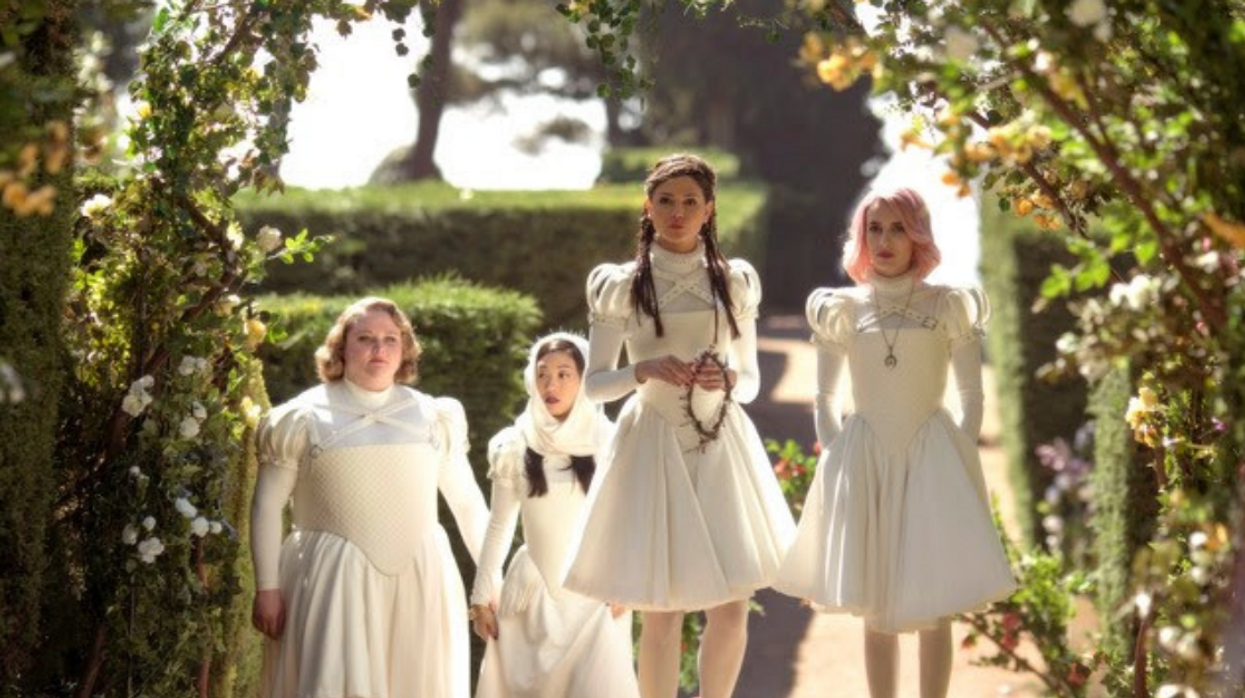How Alice Waddington Designed Her Future in Paradise Hills
How a first-time filmmaker turned her short into a Sci-Fi Fantasy Sundance premiere.

Alice Waddington didn't go to film school.
She taught herself through work as a fashion photographer, camera department intern, assistant editor, and costume designer.
The latest manifestation of all her cross-departmental training is Paradise Hills, which premiered this week at Sundance, starring Emma Roberts, Mia Jovovich, and Awkwafina among others.
One of the many things that makes Paradise Hills stand out is that it is a high concept science fiction fantasy, based on an original concept. I was lucky enough to sit down with Alice and get the full story of her background and her approach to the craft, which we'll be releasing as a podcast soon.
What Alice managed to do, most impressively, is take a short called Disco Inferno that she invested literally everything in, and use it to pitch her feature at Fantastic Fest.
Alice's inspiration largely comes from her background in design. She grew up reading books like Ender's Game imagining herself in high fantasy settings. What she felt was missing from the mainstream was those types for stories, only with characters like her and her friends at the center.
In her own words, she made Paradise Hills for her teenage self.
The film takes audiences on a trip into a brand new sci-fi fantasy universe, where the rules aren't all entirely clear from the outset, and we learn as we go. But how did this first-time filmmaker sell investors and producers on this mix of George Lucas and Guillermo Del Toro? Especially in an age where content like this seemingly must come from existing intellectual property?
The short answer is she did her homework.
Waddington planned out and designed multiple distinct versions of her vision, each built around existing architectural spaces she knew of in different parts of the world. She fully fleshed out the key locations of her story within each space and made all those stunning visuals a part of the pitch she took to Fantastic Fest.
But that wasn't all she took with her.
She also looked into the numbers. She presented investors with some real data, for example, of how large the female gamer market is, and how untapped it has been to this point. The raw data inspired investors to make a wise choice. She gave them the vision, showed them precisely where and how she'd pull it off, and provided them with evidence that the audience for the film existed.
Pretty soon she had screenwriters fleshing out the script and was attaching her first choices for the key roles.
There are levels and layers to what Waddington does in Paradise Hills that exist in the design. The costumes, for example, reveal subtext and meaning, the props and set design are references to artistic movements in her homeland Spain.
Whatever she does next, it'll be a visual feast, and considering how much she pulled off with the limited resources available, we'll be excited to see what she can do with even more at her disposal.
Check back soon for the full interview where Alice takes us through her process, how she learned the many requisite filmmaking skills, and how she brought this unique vision to life
For more, see our ongoing list of coverage of the coverage of the 2019 Sundance Film Festival.
No Film School's podcast and editorial coverage of the 2019 Sundance Film Festival is sponsored by RODE Microphones and Blackmagic Design.













